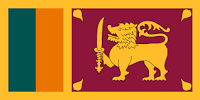Neurology is the field of medicine that examines and treats nervous system problems. The nervous system is a comprehensive and complicated system that controls and regulates physiological processes. It is divided into two parts. The brain and spinal cord forms CNS. All other neural components, including eyes, ears, skin, and other "sensory receptors," are considered to be part of the peripheral nervous system.
A neurologist is a medical specialist who diagnoses, treats, and manages brain and nervous system issues (brain, spinal cord, and nerves). A neurologist knows everything about the anatomy, functioning, and diseases that damage your nerves and neurological system. Your nervous system regulates everything you think, feel, and do, from moving your arm to your heartbeat.
A neurosurgeon is a medical specialist who specializes in brain, spinal cord, and nerve surgery. The neurologist treats disorders such as:
• Stroke
• Multiple sclerosis
• Headache issues
• Brain and peripheral nervous system infections
• Parkinson's disease and other movement disorders
• Alzheimer's disease, Parkinson's disease, and Amyotrophic Lateral Sclerosis (Lou Gehrig's disease) are examples of neurodegenerative diseases.
• Epilepsy and other seizure disorders
• Spinal cord injuries
1. Anterior Cervical Discectomy
An anterior cervical discectomy is a surgical operation that removes a ruptured intervertebral disc from the spine in the neck through the front of the neck. To guarantee spinal stability, an anterior cervical discectomy is frequently combined with fusion and fixation treatments.
A fusion is the placement of a bone graft that will fuse (grow together) with the vertebrae (spinal bones) in the region. The insertion of screws, rods, or plates is known as fixation. A fixation is a frequently used method of holding the bones together while they fuse.
2. Lumbar Decompression
Decompression surgery is typically performed to treat physical discomfort by nerve root pinching. Lumbar nerve root pressure is caused by one of two things: a herniated lumbar disc or spinal stenosis. This sort of pain is commonly known as radiculopathy or sciatica.
Decompression surgery includes removing a tiny part of the bone over the nerve root and/or disc material from beneath the nerve root to reduce pinching and allow the nerve to recover.
3. Lumbar Fusion
A lumbar fusion is intended to relieve discomfort at an uncomfortable motion segment in the lower back. This type of surgery is most typically used to treat pain and impairment caused by lumbar disc degeneration or spondylolisthesis.
A spinal fusion operation involves the use of a bone graft to restrict mobility at an uncomfortable vertebral segment, which should reduce discomfort caused by the joint. Spinal fusion is sometimes accompanied by spinal surgery instrumentation (medical devices), bone grafting techniques, and a bone stimulator.
4. Craniotomy
A craniotomy is a surgical procedure to remove a portion of the skull bone to expose the brain. Specialized instruments are utilized to remove the bone flap, which is a portion of bone. The bone flap is temporarily removed and restored following the brain surgery.
Some craniotomy techniques may include computer and image guidance (magnetic resonance imaging [MRI] or computed tomography [CT] scans) to locate the precise spot within the brain that is to be excised. This approach necessitates the use of a frame put on the skull or a frameless system that relies on superficially placed markings or landmarks on the scalp.
Another form of craniotomy is an endoscopic craniotomy, which involves inserting a light scope with a camera into the brain through a tiny incision in the skull.
5. Neurosurgery For Epilepsy
When medications fail to manage seizures, epilepsy surgery may be an option. This is done for medically refractory epilepsy, also known as drug-resistant epilepsy. Epilepsy surgery is performed to either prevent or reduce the intensity of seizures. Surgery is also performed to reduce seizure-related mortality, the usage of anti-seizure drugs, and the potential adverse effects of the medications.
Unmanaged epilepsy can lead to a variety of difficulties and health consequences, including:
• Physical injuries sustained during a seizure
• If the seizure happens while bathing or swimming, the person may drown.
• Anxiety and depression
• Children's developmental delays
• An uncommon consequence of epilepsy is sudden death.
• Memory or other cognitive skills deterioration
Epileptic seizures are caused by the irregular activity of brain cells known as neurons. The kind of surgery required is dependent on the location of the neurons that cause the seizure and the age of the patient.
Cure Direct Hub has listed top 5 most common neurology treatments available in different countries in the world. We can connect you with the best hospitals offering these neurology treatments at a very affordable price. So you can get a neurology treatment and also travel to a new country. You can also enjoy some new beautiful attractions while you are there for your treatment.


 Arabic
Arabic Spanish
Spanish Hindi
Hindi Tamil
Tamil Thai
Thai Swedish
Swedish